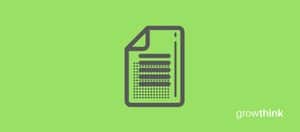Pizza Shop Financial Plan
Your financial plan should include your 5-year financial statement broken out both monthly or quarterly for the first year and then annually. Your financial statements include your income statement, balance sheet and cash flow statements.
Income Statement: an income statement is more commonly called a Profit and Loss statement or P&L. It shows your revenues and then subtracts your costs to show whether you turned a profit or not.
In developing your income statement, you need to devise assumptions. For example, will you serve 50 clients per week or 100? And will sales grow by 2% or 10% per year? As you can imagine, your choice of assumptions will greatly impact the financial forecasts for your business. As much as possible, conduct research to try to root your assumptions in reality.
Balance Sheets: Balance sheets show your assets and liabilities. While balance sheets can include much information, try to simplify them to the key items you need to know about. For instance, if you spend $100,000 on building out your pizza shop business, this will not give you immediate profits. Rather it is an asset that will hopefully help you generate profits for years to come. Likewise, if a bank writes you a check for $100.000, you don’t need to pay it back immediately. Rather, that is a liability you will pay back over time.
Cash Flow Statement: Your cash flow statement will help determine how much money you need to start or grow your business, and make sure you never run out of money. What most entrepreneurs and business owners don’t realize is that you can turn a profit but run out of money and go bankrupt.
In developing your Income Statement and Balance Sheets be sure to include several of the key costs needed in starting or growing a pizza shop business:
- Location build-out including design fees, construction, etc.
- Cost of equipment like pizza ovens, cash registers, refrigerators etc.
- Payroll or salaries paid to staff
- Business insurance
- Taxes and permits
- Legal expenses

 Use This Simple Business Plan Template
Use This Simple Business Plan Template How to Create a Great Business Plan
How to Create a Great Business Plan The Perfect Outline for a Business Plan
The Perfect Outline for a Business Plan Hot Dog Cart Business Plan Template
Hot Dog Cart Business Plan Template Catering Business Plan
Catering Business Plan Business Plan Consulting Services
Business Plan Consulting Services Restaurant Business Plan Template
Restaurant Business Plan Template Fast Food Business Plan Template
Fast Food Business Plan Template Food Truck Business Plan Template
Food Truck Business Plan Template